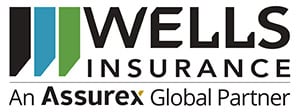How COVID changed the Golf Industry

As we all know, many industries struggled to survive during the early months of the COVID pandemic. Waning a bit in recent years, the golf industry witnessed a boom that was welcomed nationwide as people were reacquainted with, or introduced to the game.
Think about it…who wouldn’t want to participate in an office zoom call (video off, of course!) or conference call from the tee box on the 12th hole? Between the golf course, tennis courts, pool, dining and fitness, individuals and families could enjoy time together on their own schedule.
Golf was one of the few industries that was not crushed by the pandemic. In fact, it thrived during those early months as golf revealed and quenched, a desire most people have for fellowship while simultaneously providing an outdoor outlet for skill and competition.
The Covid pandemic essentially created a new golf renaissance. As a result, an “arms race” emerged among golf courses and country clubs as they raced to build new facilities like pools and splash pads, spas, bars, lounges, golf teaching centers and fitness centers to stay competitive. The discretionary spending power of families became in play perhaps more than ever, and growing market share meant enhancing or adding more amenities.
As the industry grew and the dust settled, it became clear to many, but overlooked by some, that a Club’s established risk management practices may not adequately cover today’s new risks. With new and enhanced amenities and facilities, risk exposures have likely increased as well.
A few examples below:
- In most cases, the average Club’s revenues and building values have increased, and it’s important that club policies reflect that. In the event of a property loss, if there is a gap between those new values and policy coverage, clubs may be left to scramble to secure that funding from assessments or CapEx funds.
- A new fitness center? Junior camps and travel program? Spas? Swimming pool? All of these things change a club’s risk profile from an insurance carrier’s perspective. Furthermore, any element where there is one-on-one with youth (junior camps, swim teams, travel) create heightened risk exposures for the club that may not be addressed in current policies.
- Today’s cyber attacks present significant exposures as they have become startlingly more common and more sophisticated every year, putting a club’s high net worth membership’s privacy and financial information at risk. Cyber threats are worth a separate detailed discussion…phishing, Business Email Compromise (BEC), ransomware and more.
- Where do Club employees play into this equation? COVID caused a major disruption to the workforce, and labor shortages are still an ongoing concern. The pandemic encouraged an environment that forced many industries, not just golf and country clubs, to hire less qualified (or even unqualified) workers. In turn, this dynamic led to more injuries (both physical and relational) of people not properly trained. From increasing pressure on Clubs due to Workers Compensation claims to Employment Practices Liability claims…claims such as these impact not only the profitability but the reputation of clubs across the Golf industry.
Golf and country club owners and executives have a lot on their plate. From growing membership to investing in staff to maintaining the course, the COVID-19 pandemic brought huge opportunities and new risks. Whether it’s protecting the assets entrusted by members, or managing liability issues regarding employees on site, confidence in a club’s risk management program is key to winning the long game.
The golf industry’s ability to adapt to its customers’ desires and emotions during the pandemic has served as the impetus for a robust renaissance. Much like hiring a General Manager, CFO or CEO for the Club with an acumen in the specified field, it’s crucial that Club Executives develop relationships with insurance advisors specializing in the golf industry who understand the golf businesses from the inside out. Making informed decisions about the coverage needs of the Club, while contemplating future growth plans, is paramount.
How do Club executives keep the growth momentum going? First, being attentive to the needs of members and guests will play a substantial part in that. Second, asking the same from your insurance advisor will as well.
We welcome a conversation to discuss ways we can collaborate in strengthening your golf course or country club’s profitability, risk management, employee acumen and preparation. Please fill out the form below to start a conversation with us.


